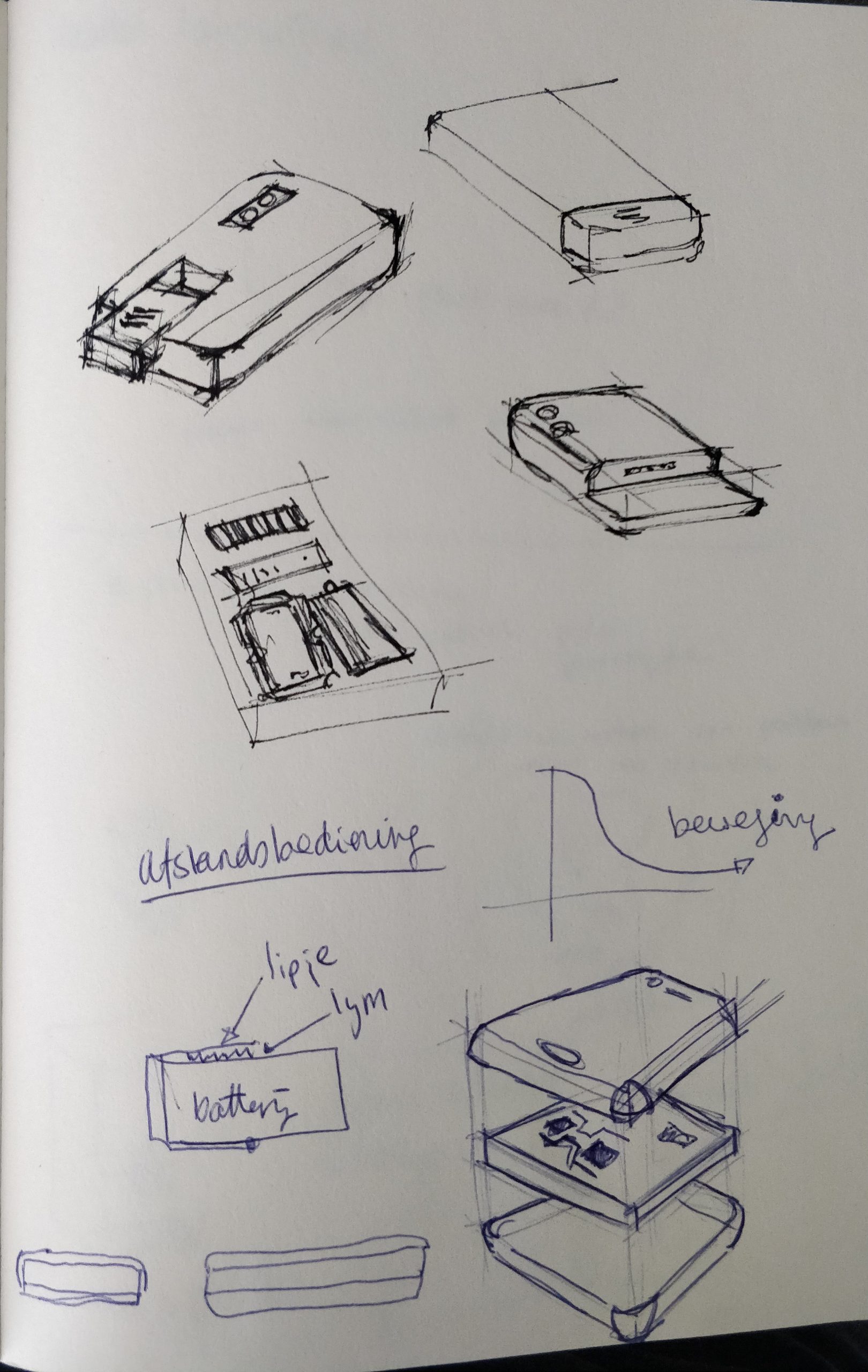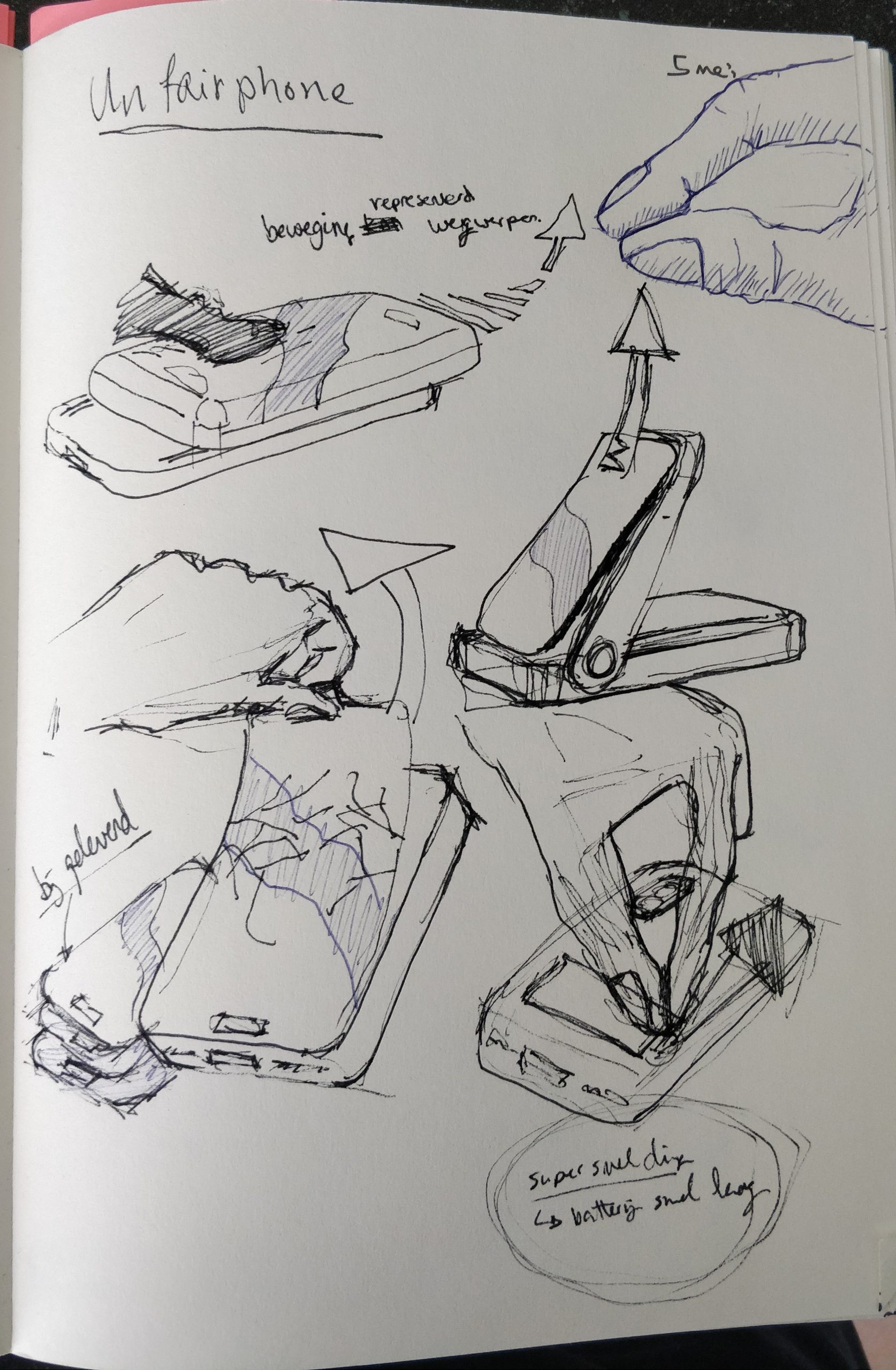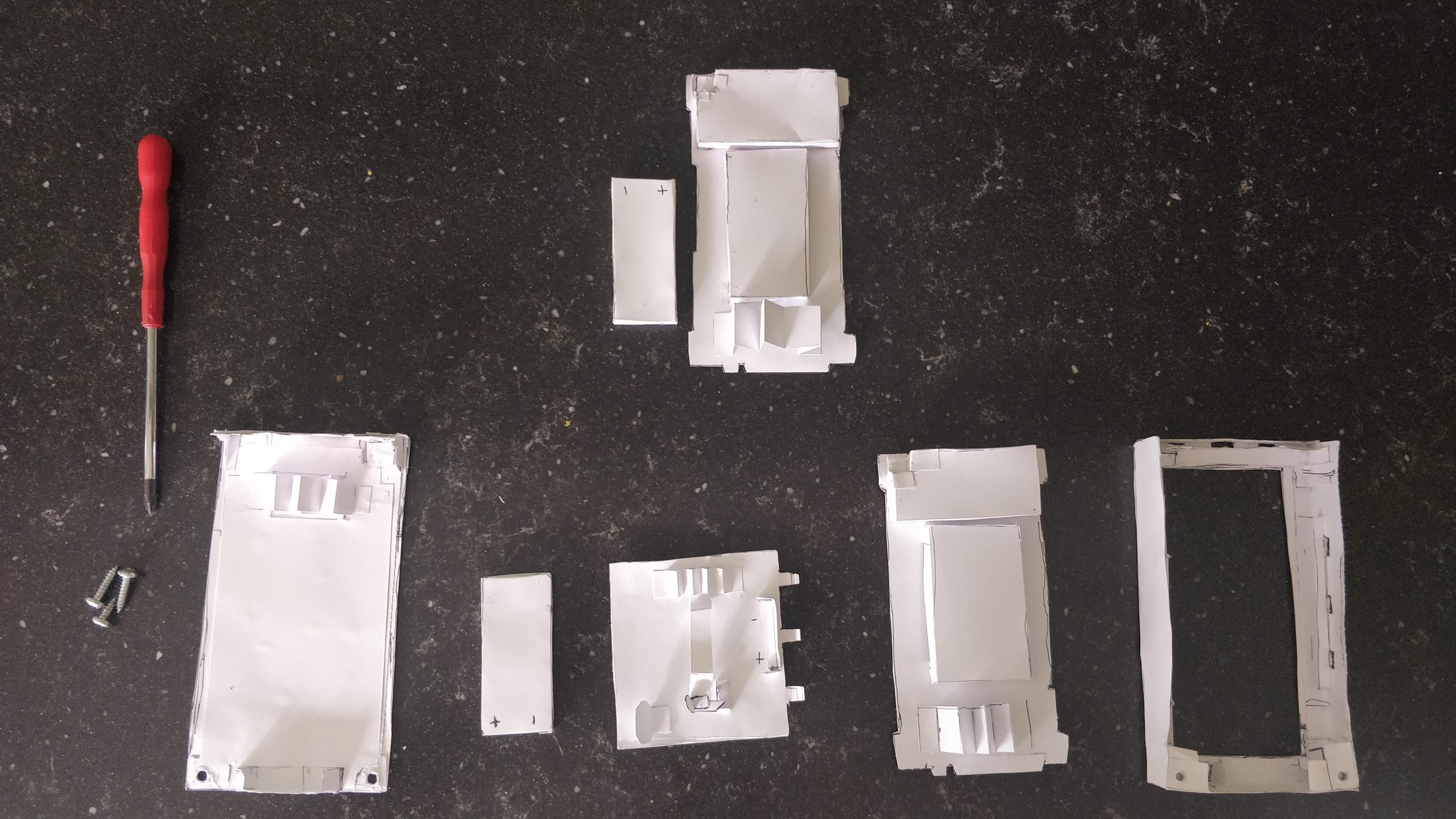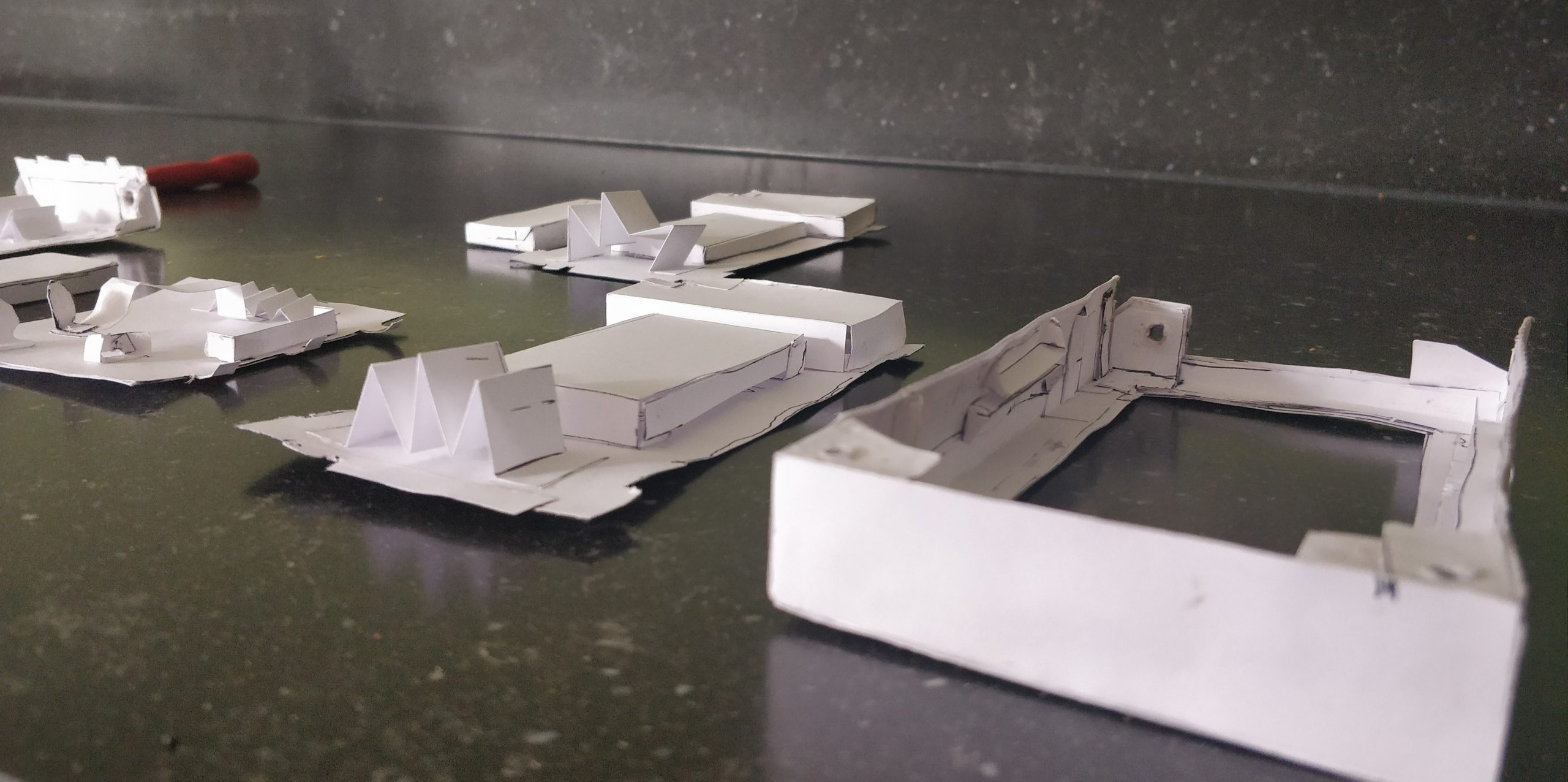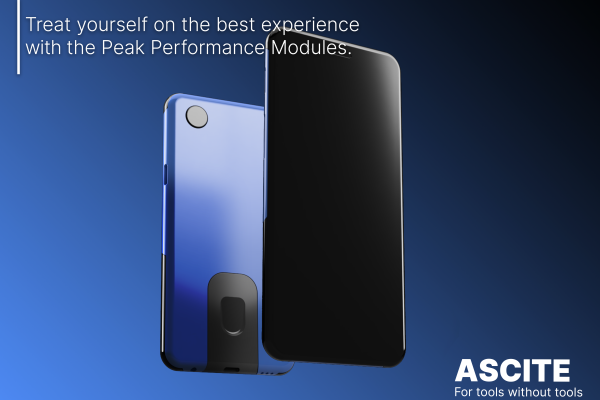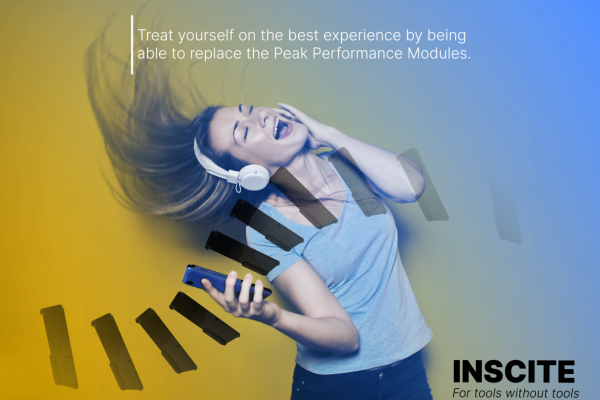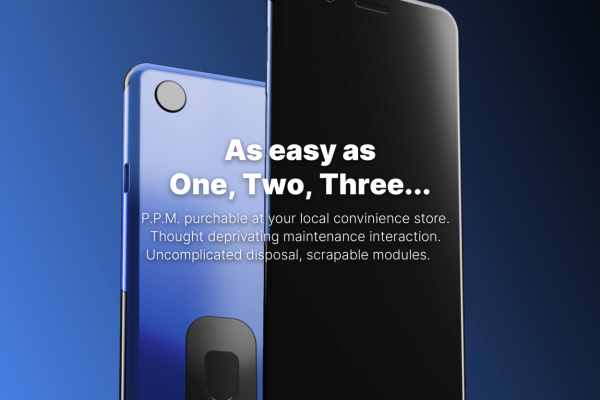Research / User Testing / UX / UI Design
Introducing the next generation smartphone, designed with sustainability and convenience in mind. Inspired by the successful business model of Gillette, this smartphone features consumable parts that can be easily replaced, reducing waste and promoting a circular economy.
Say goodbye to planned obsolescence and hello to a new way of thinking about our devices. With its focus on ease of replacement and affordability, this smartphone offers a solution to the environmental and economic challenges faced by traditional devices.
Kickoff
My Bachelor’s thesis project represents a significant milestone in my design career. It questions the status quo and offers practical solutions for those looking to make the world a better place. Despite changes in the EU’s laws on product repairability, I saw the need to address remaining loopholes in the legislation. This project is my contribution to raising public awareness of these issues and presenting possibilities for positive change.
” I just want my phone to work again, without me having to stress about it to much”
User test subject 2
1.
Stakeholder Mapping
Gave me a general understanding of what kinds of repair there are and what that could mean for this general concept.

2.
Research into the psychological issues that arise during repair
Gave me a general understanding of the human limitations and psychological issues that arise when repairing products.

3.
Expert interviews
Gave me a general understanding of the human limitations and psychological issues that arise when repairing products.

4.
Business casus research
Provided valuable insights into real-life business scenarios, including factors such as market trends, competition, consumer behavior.
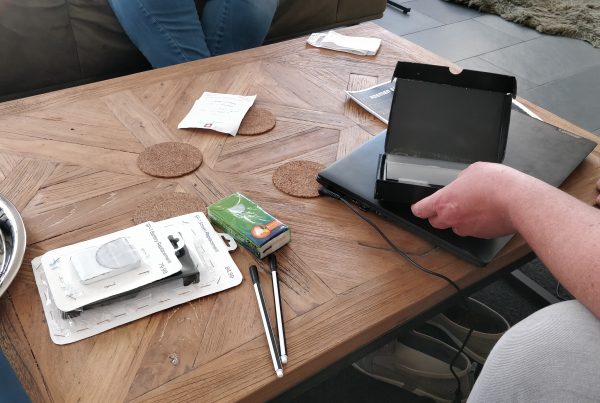
Synthesizing research and business oppertunities into a design purposal
How do you create a smartphone that is easy to maintain for the average user, without the need of any technical knowledge or insight, while this concept remains a viable sales direction for the manufacturer?
Designing for interaction
During my research phase, I encountered a shortage of dedicated user experience and interface design guides for products that required low-level maintenance but had high maintenance cycles. A turning point came during a brainstorming session with a friend, when I observed him making coffee. The coffee machine provided a perfect illustration of the interaction parameters I was seeking and became the foundation for my interaction framework.
Merging concept and interaction
With the interaction concept established, I shifted my focus to merging it with my business idea. This required a paradigm shift in thinking about our smartphones and exploring innovative ways of approaching the market.
The Gillette business model served as an inspiration, and I aimed to incorporate its principles into the design of my smartphone, with the goal of creating a product that would provide an exceptional user experience while promoting affordability but trashing sustainability.
Low fedelity prototype
To prepare for the upcoming user tests, I needed to create a low-fidelity prototype. This involved using readily available materials and improvising where necessary. I reinforced cardboard paper with wood glue to create a locking mechanism, and then added threads to secure the parts.
Along with the phone prototype, I also created replicable parts packaged as if they were purchased in-store. This was to provide a realistic representation of the product and its features for the user testing phase.
Usertesting
Due to the widespread impact of the COVID-19 pandemic, user testing was severely limited. In order to maximize efficiency, I carefully selected my test subjects to represent a diverse range of households with varying levels of income.
This approach provided me with valuable feedback from a wide range of users, helping to ensure that the product met the needs and expectations of a broad audience. With this approach, I was able to gather valuable insights and make informed decisions about the design and features of the smartphone, despite the challenging circumstances.
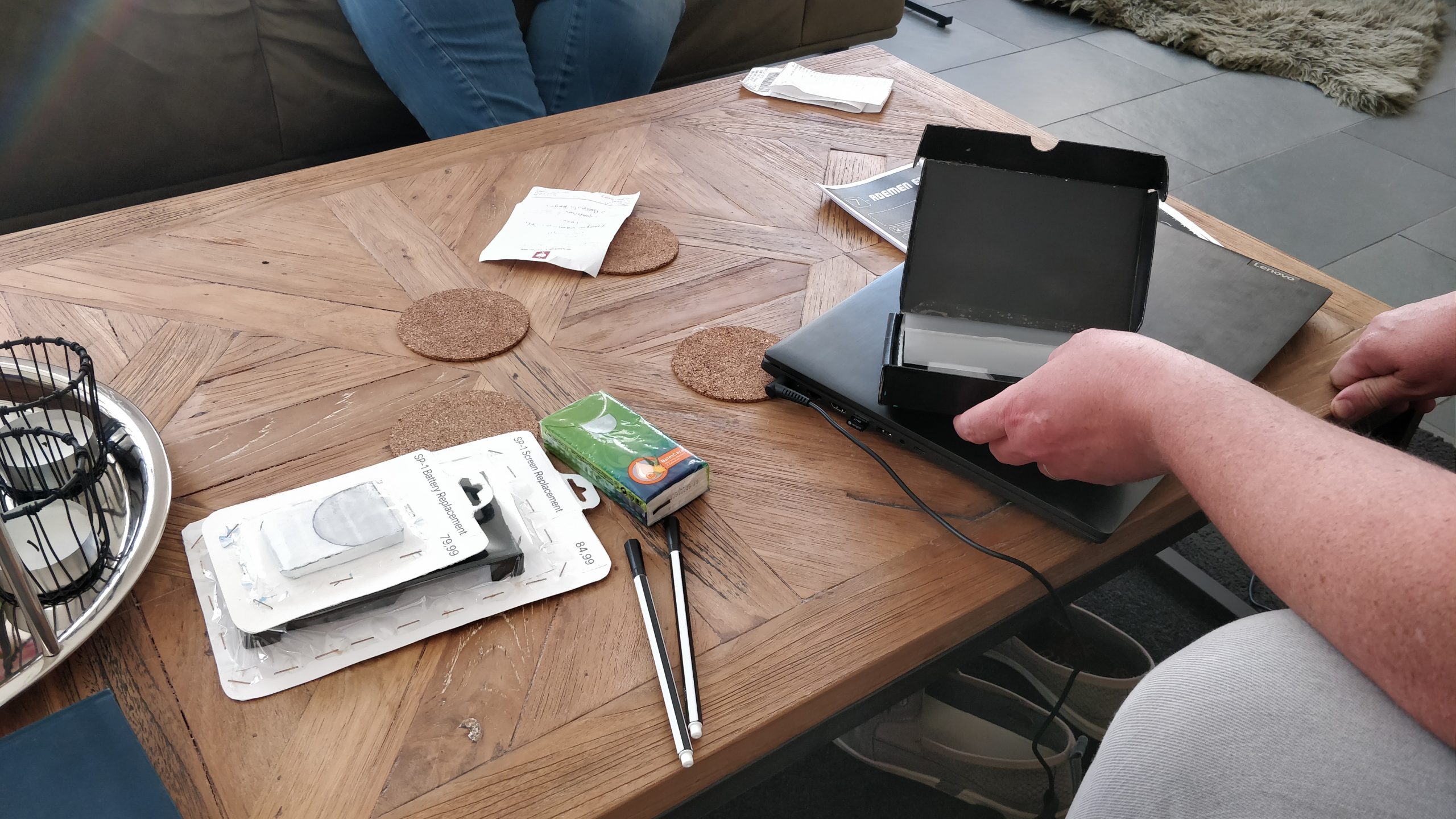
Final Prototype
Following a thorough research phase and validation of my concept, I was given approval to construct the final show model. The cutting-edge technology of 3D printing, laser cutting, and model building were utilized to bring my vision to life.
Every detail was carefully considered and the end result was a seamless integration of form and function. The final prototype was a testament to the hard work and dedication that had gone into the project and represented the culmination of months of planning, design, and execution.
Creating advertisements
To emphasize the absurdity of the remaining loopholes in product repairability legislation, I created marketing materials that effectively communicated my message. The copy was carefully crafted to convey the importance of closing these gaps and promoting a more sustainable future.
The marketing materials were designed to grab attention and drive the point home, highlighting the need for change and sparking conversation about the issue. By using these materials, I aimed to educate and inspire people to join the movement towards a greener, more responsible future.
Results
After all this hard work that spanded 6 months during the height of the first wave of Covid-19, I passed my thesis. This set me up with a solid foundation to start my Master in Industrial Design at the University of Technology in Eindhoven.
My work is still showcased at the Communication and Multimedia bachelor thesis website.




